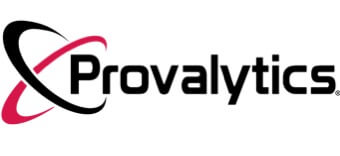Multi-Touch Attribution for Comprehensive Marketing Analysis
Multi-Touch Attribution is a marketing methodology that enables companies to track and analyze the effectiveness of their marketing campaigns across multiple touchpoints. In essence, it enables businesses to determine which marketing channels and campaigns are generating the most revenue and driving customer engagement.
Traditional single-touch attribution models give credit to only one touchpoint, usually the first or last, which simplifies the complex journey a customer takes before purchasing a product. This approach can lead to inaccurate marketing campaign measurement, missed optimization opportunities, and a poor understanding of the customer journey.
🚀 Yes, I Want The 2024 Playbook!

The Benefits of Multi-Touch Attribution
Multi-Touch Attribution, in contrast, models look at all the touchpoints in a customer journey, giving credit to each touchpoint that contributed to the conversion. There are different approaches to multi-touch attribution, including linear, time decay, and position-based models.
Each touchpoint along the customer journey receives equal credit in the linear model. The time decay model gives more weight to touchpoints that are closer to the conversion. And the position-based model assigns the most credit to the first and last touchpoints and distributes the rest of the credit evenly among the touchpoints in between.
How to Implement Multi-Touch Attribution Models
Selecting the right Multi-Touch Attribution model depends on the nature of the industry, its sales cycle, and the customer journey. It can be challenging to develop a Multi-Touch Attribution model, but it is worth the time and effort for business owners that want to improve their marketing strategies and strengthen their return on investment.
Businesses can gain insights into which channels and campaigns are most efficient at each stage of the customer journey by implementing Multi-Touch Attribution, which allows them to make data-driven decisions about where to dedicate their marketing budgets. They can also identify any gaps in their customer journey and optimize their campaigns to improve their acquisition and retention of customers.
In conclusion, Multi-Touch Attribution is a major source of competitive advantage looking to obtain a greater understanding of their customer’s journey and optimize their marketing efforts. While it can be difficult to implement, the benefits of accurately measuring the impact of marketing campaigns on revenue and profitability make the effort worthwhile.
How is Multi-Touch Attribution different from Single-Touch Attribution?
Single-touch attribution models give credit to only one touchpoint, usually the first or last one. This approach oversimplifies the complex journey a customer goes through before making a purchase, which can lead to inaccurate measurement of marketing campaigns. In contrast, multi-touch attribution models look at all the touchpoints in a customer journey, giving credit to each touchpoint that contributed to the conversion.
What are the different types of Multi-Touch Attribution models?
There are different approaches to Multi-Touch Attribution, including linear, time decay, and position-based models. The linear model assigns equal credit to each touchpoint along the customer journey, while the time decay model attributes more credit to the touchpoints that are closer in time to the conversion. The position-based model assigns the most credit to the first and last touchpoints and distributes the rest of the credit evenly among the touchpoints in between.
How can businesses implement a Multi-Touch Attribution model?
Implementing a Multi-Touch Attribution model can be challenging, but the benefits of accurately measuring the impact of marketing campaigns on revenue and profitability make it worth the effort. Choosing the right Multi-Touch Attribution model depends on the nature of the business, its sales cycle, and the customer journey. Businesses can gain insights into which channels and campaigns are most effective at each stage of the customer journey, allowing them to make data-driven decisions about where to allocate their marketing budgets.

